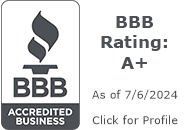Navigating the landscape of homeownership can often feel like charting through unexplored territory, especially when it comes to understanding your mortgage. This blog post aims to demystify the mortgage process, offering a comprehensive exploration of its components, including interest rates, mortgage points, and the benefits of refinancing. We’ll also delve into how amortization works and why it’s crucial in your homeownership journey.
The Basics of a Mortgage
At its core, a mortgage is a loan from a bank or financial institution that enables you to cover the cost of a home. The house serves as collateral for the loan, which means the lender can foreclose on your home if you default on the mortgage payments. Understanding the terms of your mortgage can save you money and stress over time. Let’s break down the essential components:
Principal
The principal is the loan amount that you initially borrow from the lender. It’s the base figure upon which interest is calculated. As you make monthly payments, a portion of that payment reduces the principal, gradually decreasing the amount you owe.
Interest Rate
The interest rate is the cost you pay annually for borrowing money, expressed as a percentage of the loan. It significantly influences your monthly payments and the total cost of your loan over time. Interest rates can be fixed, remaining the same for the loan’s duration, or variable, changing at specified periods.
Mortgage Points
Mortgage points, also known as discount points, are fees paid directly to the lender at closing in exchange for a reduced interest rate. One point equals 1% of your mortgage amount. Paying points can lower your monthly payments and save you money over the life of your loan, but it’s essential to calculate whether the upfront cost outweighs the long-term savings, based on how long you plan to stay in the home.
Amortization
Amortization is the process of spreading out your loan payments over time. Early in your mortgage, a larger portion of your payment goes toward the interest rather than reducing the principal. As time goes on, this balance shifts, and you begin to pay off more of the principal with each installment. Understanding amortization is key to seeing how your equity builds and how refinancing can affect your loan.
The Benefits of Refinancing
Refinancing involves replacing your existing mortgage with a new one, typically to take advantage of lower interest rates, change your loan term, or convert from a fixed-rate mortgage to an adjustable-rate mortgage (or vice versa). Here are some benefits and considerations:
Lower Interest Rates
Securing a lower interest rate can reduce your monthly payments and the total interest paid over the life of the loan, potentially saving you thousands of dollars.
Changing Loan Terms
Extending your loan term can lower monthly payments by spreading them out over a longer period, though it may increase the total interest paid. Conversely, shortening your loan term can raise monthly payments but significantly decrease the total interest paid.
Cash-Out Refinance
This option allows you to refinance for more than you owe and take the difference in cash. It can be beneficial for consolidating debt, funding home improvements, or covering significant expenses. However, it’s vital to consider the implications of increasing your loan amount and potentially your interest rate.
Understanding Amortization in Refinancing
When you refinance, the amortization process starts anew. Early payments on the new mortgage will primarily go towards interest, similar to your original loan. If you’ve been paying your mortgage for several years, it’s crucial to consider how refinancing will reset the amortization schedule and affect the equity you’ve built.
Making Informed Decisions
Before deciding to refinance or purchase points, consider your financial goals and circumstances. Here are some strategies:
- Long-term Planning: If you plan to stay in your home for many years, buying points to lower your interest rate or refinancing to a shorter-term loan might make financial sense.
- Comparing Costs: Use mortgage calculators to compare the costs of your current mortgage with those of a new loan or the impact of buying points. Consider closing costs, appraisal fees, and the break-even point of any investment.
- Consulting Professionals: A financial advisor or mortgage broker can offer personalized advice based on your financial situation and goals.
Conclusion
Understanding the components of your mortgage, from interest rates and mortgage points to the intricacies of amortization, can empower you to make informed decisions about your home loan. Whether you’re considering refinancing, buying points, or simply aiming to pay off your mortgage more efficiently, a deep dive into these elements will equip you with the knowledge to navigate your mortgage with confidence. Remember, each homeowner’s situation is unique, so consider your long-term goals and consult with professionals to tailor a strategy that best suits your needs. Your mortgage is not just a monthly bill; it’s a pivotal tool in your financial toolkit, offering opportunities for savings, investment, and personal growth.






